Converting a traditional chlorine pool to a saltwater pool has become a popular trend among pool owners in recent years, largely due to the increasing cost of chlorine.
Saltwater pools are known for their easy maintenance, lower operating costs, and luxurious feel. If you’re considering changing your pool to a saltwater system, you may wonder if it’s possible and what the process entails.
Fortunately, converting your chlorine pool to a saltwater pool is possible. I changed my pool system to a salt system at the beginning of last pool season. It was a straightforward process that only took a few hours.
The conversion process involves installing a saltwater chlorination system, which generates chlorine from salt instead of adding it directly to the pool. This eliminates the need for regular chlorine treatments and reduces the chemicals needed to keep your pool clean.
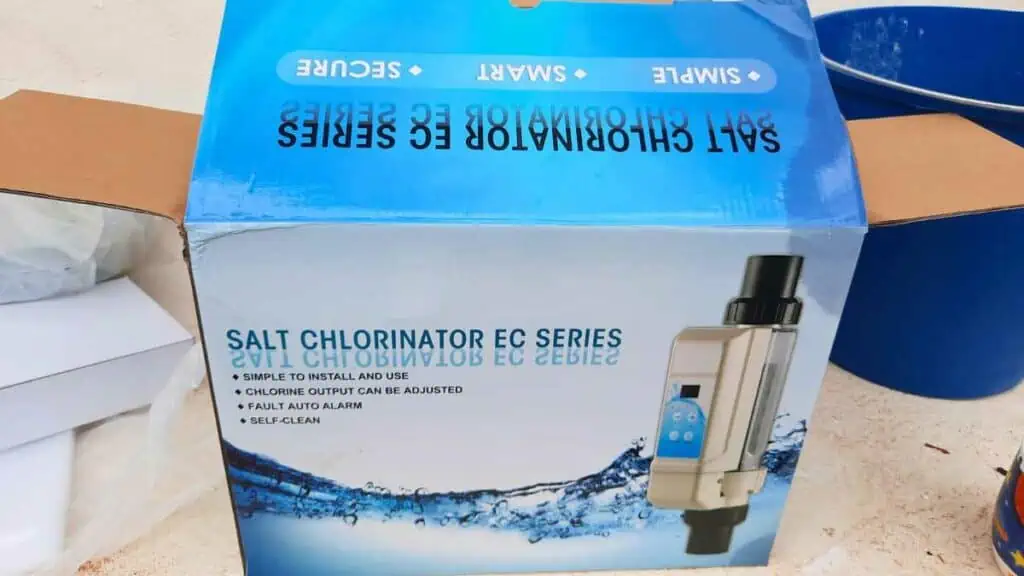
Key Takeaways
- Installing a saltwater chlorination system makes it easy to convert a traditional chlorine pool to a saltwater pool.
- Saltwater pools offer easy maintenance, lower operating costs, and a luxurious feel.
- The conversion process can be costly, and it’s important to understand the steps involved before making the switch.
Understanding Chlorine and Saltwater Pools
If you’re considering changing your traditional chlorine pool to a saltwater pool, it’s important to understand the differences.
- Chlorine pools use added chlorine as a disinfectant to kill bacteria and other contaminants in the water.
- Saltwater pools, on the other hand, use a saltwater generator to convert salt into chlorine, keeping the water clean.
One of the main benefits of a saltwater pool is that it can be less harsh on your skin and eyes than traditional chlorine pools. Saltwater pools also tend to have lower chlorine levels, which means less chlorine odor and less damage to colored hair. The water in a saltwater pool can also feel softer and more refreshing.
However, it’s important to note that saltwater pools still contain chlorine in a different form. The saltwater generator converts salt into chlorine, meaning proper chlorine levels must still be maintained in the pool.
Additionally, saltwater pools can be expensive to install, as the saltwater generator and other equipment can be costly. However, the chlorine savings will normally offset this cost.
How to Convert a Chlorine Pool to a Salt Pool
Converting your chlorine pool to a saltwater pool is a straightforward process that can be completed in a few simple steps. Here’s how to convert a pool to salt water:
- Install a Salt Chlorinator: The first step in the conversion process is to install a salt chlorinator (see instructions below). This device converts the salt in your pool into chlorine, which helps to keep your pool clean and clear. Many different salt chlorinators are available, so choose one that is compatible with your pool and meets your specific needs.
- Add Pool Salt: Once you have installed your salt chlorinator, you must add pool salt to your pool. The amount of salt required will depend on the size of your pool, so be sure to follow the manufacturer’s instructions carefully. It is essential to use the correct type of salt, as not all salts are suitable for use in a saltwater pool.
- Adjust the Control Board: Once you have connected the salt cell, you must adjust the control board on your salt chlorinator. This will allow you to set the correct chlorine levels for your pool. Follow the manufacturer’s instructions carefully when adjusting the control board.
- Run the pump/salt chlorinator. I ran my pump for 48 hours with the salt generator on the boost setting to allow enough salt to be turned into chlorine.
- Monitor Your Chlorinator Controller: After you have completed the conversion process, you will need to monitor your chlorinator controller regularly. This will allow you to ensure that your pool is properly balanced and the chlorine levels are correct. Follow the manufacturer’s instructions carefully when using your chlorinator controller.
Installing the Salt Chlorinator
Of course, each salt chlorinator is different, so how it is installed will vary. However, this is how I installed mine, which may be helpful to some.
Select the location to install
You need to install the salt chlorinator somewhere in the return line (i.e., after the water has passed through the filter). Exactly how or where will depend on your pool’s setup and the salt chlorinator you purchased.
Note: If you have a heater, it should ideally be fitted in the return line after the heater.
Some have a separate controller that must be installed on a wall, while others, such as the one I have, have the controller built in.

Rework the plumbing
Once you have decided where and how to install the salt chlorinator, you must cut the existing pipework and replumb it.
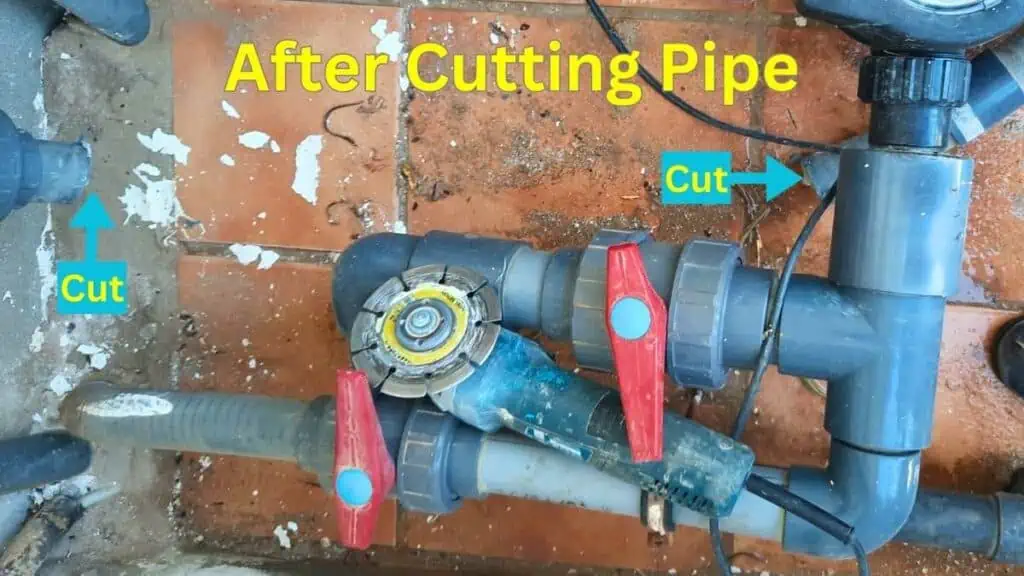
Install the unit
Once the actual unit is installed in the pipework, you will either have to:
- install the control unit on a wall if it is separate, and then connect the controller to the salt chlorinator
- if the controller is integral (as in mine below), you must hook it up to your pool’s electrical system.
You should connect the electricity supply to the same timer that controls your pool pump so that whenever the pump is on the salt chlorinator is also on.
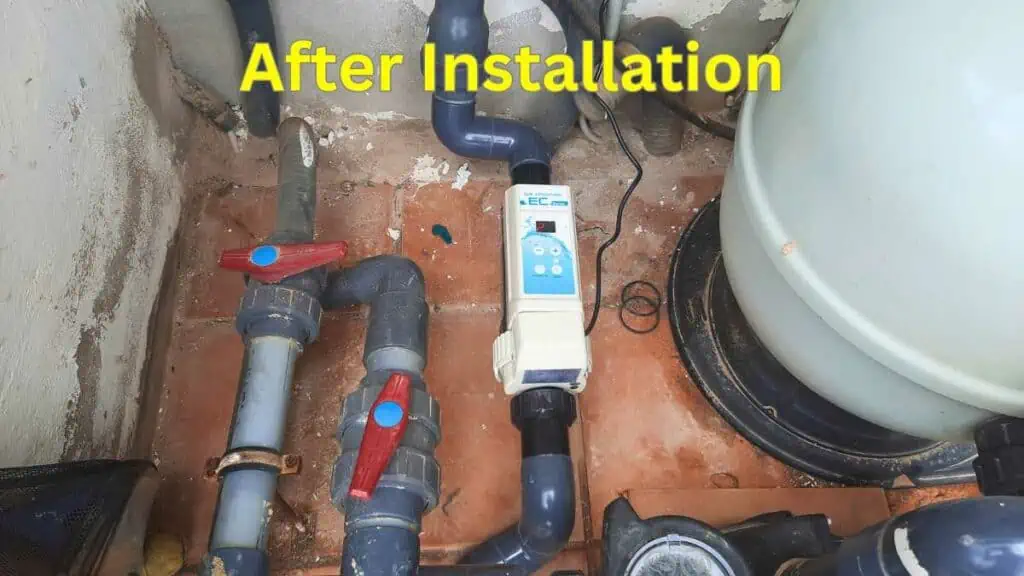
Why Convert to a Saltwater Pool
If you’re tired of the harsh chemicals and maintenance required to keep your chlorine pool clean, converting to a saltwater pool may be the right choice. Here are some of the benefits of a saltwater pool:
Clearer, Softer Water
Saltwater pools use a natural process called electrolysis to generate chlorine, so you’ll have fewer chemicals in your pool. This results in gentler, softer water on your skin, eyes, and hair.
You won’t have to worry about the strong chlorine smell that can linger around a traditional chlorine pool.
Better Swimming Experience
Swimming in a saltwater pool can be a luxurious experience. The water feels silky and smooth, and you won’t experience the same harsh chemical burn that you might get from a chlorine pool.
You’ll be able to enjoy a more natural swimming experience without worrying about the negative effects of chlorine.
Lower Maintenance
While a saltwater pool does require some maintenance, it’s generally less than what’s needed in a chlorine pool. You won’t have to worry about adding chlorine tablets or shock treatments, and you’ll spend less time balancing the chemicals in your pool.
The salt chlorinator system will automatically generate the necessary amount of chlorine, so you won’t have to do it manually.
Lower Chemical Costs
Chlorine has become much more expensive and harder to obtain in recent years due to problems in some large chemical plants. With a saltwater pool, the only cost of chlorine is chlorine shock, which you will need occasionally.
Cons to Consider
While there are many benefits to converting to a saltwater pool, there are also some cons to consider.
- The initial cost of converting to a saltwater pool can be significant, and you’ll need to purchase a salt chlorinator system and salt to get started.
- The salt can be corrosive to some pool materials, so you must ensure your pool is compatible before switching.
- While the water is gentler on your skin and eyes, it’s not entirely chemical-free, and some people may still experience irritation.
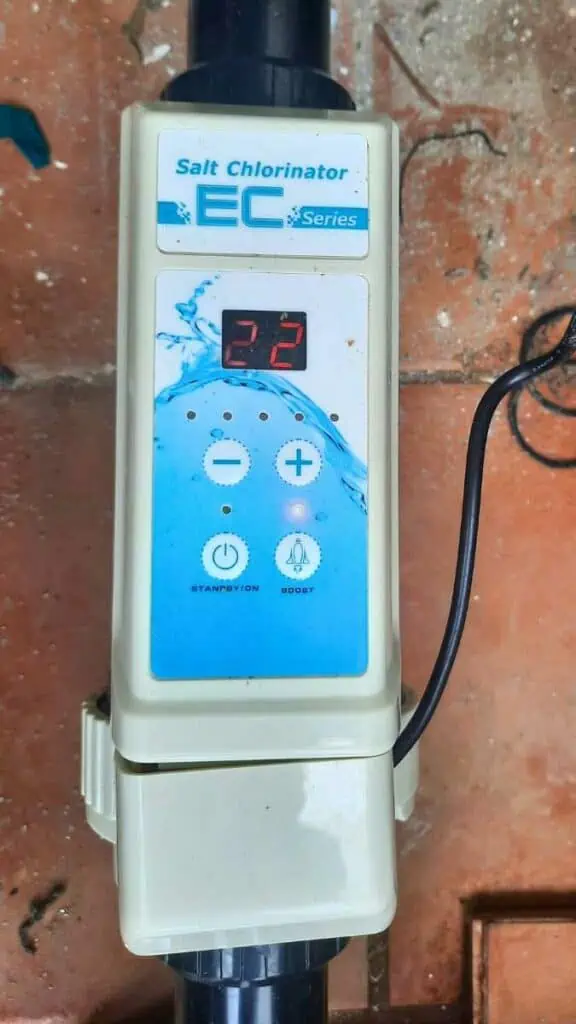
Cost Implications
Converting a chlorine pool to a saltwater pool comes with a cost implication. The cost varies depending on the size of the pool, the manufacturer of the salt chlorine generator, and the type of pool. Generally, converting an existing pool into a saltwater pool is between $800 and $2,000. However, the cost can be as low as $600 for an above-ground pool and as high as $2,200 for an inground pool.
The cost of salt is typically 25 cents to 63 cents per pound.
It’s important to note that converting a pool to a saltwater system can save you money in the long run. Saltwater pools require less maintenance, fewer chemicals, and less electricity to operate than traditional chlorine pools. This means you’ll save on chemicals, electricity bills, and maintenance costs over time.
When considering the cost of converting your pool to a saltwater system, it’s important to budget for the initial cost of installation as well as the ongoing cost of salt and maintenance. It’s also important to research different manufacturers and models of salt chlorine generators to find the best one for your needs and budget.
Maintenance After Conversion
Maintaining a saltwater pool requires less work than a chlorine pool. However, that does not mean you can ignore it entirely. Proper maintenance is still necessary to keep your pool clean and safe.
Salt System Maintenance
Your salt system is the heart of your pool’s sanitation system. It produces the chlorine that keeps your pool clean. Regular maintenance is necessary to keep it functioning properly.
The most critical part of your salt system is the salt cell. Over time, the cell can become coated with calcium deposits, reducing its effectiveness.
To prevent this, you need to clean the cell periodically. The frequency of cleaning depends on several factors, including the size of your pool, the amount of use it gets, and the hardness of your water.
To clean the cell, remove it from the system and soak it in a solution of muriatic acid and water. Follow the manufacturer’s instructions carefully, and wear gloves and eye protection.
Sacrificial Anode Maintenance
Your sacrificial anode is a crucial component of your pool’s salt system. It protects your pool equipment from corrosion. Over time, the anode will become corroded and need to be replaced.
To replace the anode, turn off the power to your salt system and remove the anode. Then, install the new anode and turn the power back on.
Pool Maintenance
Maintaining your pool is essential to keep it clean and safe. Here are some tips to help you keep your pool in top condition:
- Skim the surface of your pool regularly to remove leaves and other debris.
- Brush the walls and floor of your pool weekly to remove algae and other buildup.
- Vacuum your pool regularly to remove dirt and debris.
- Check your pool’s pH and chlorine levels daily and adjust them as needed.
- Backwash your pool pump regularly to remove debris from the filter.
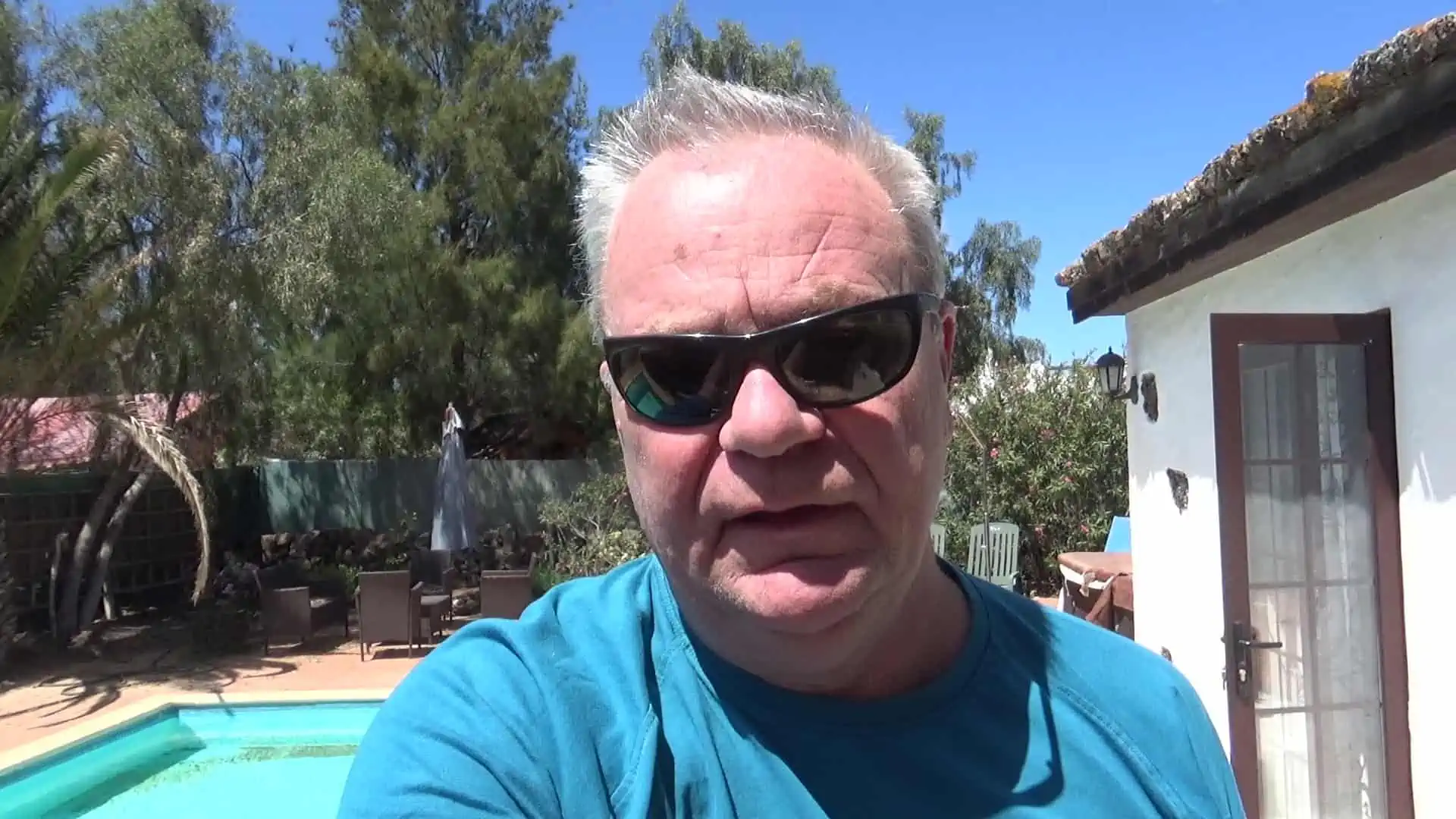
I have had hot tubs for over 20 years and a pool for the last 11 years. I had to learn how to clean, maintain and fix them the hard way. Since then I have helped many friends and neighbors with their pools and now I want to share everything I have learned with you. About Me


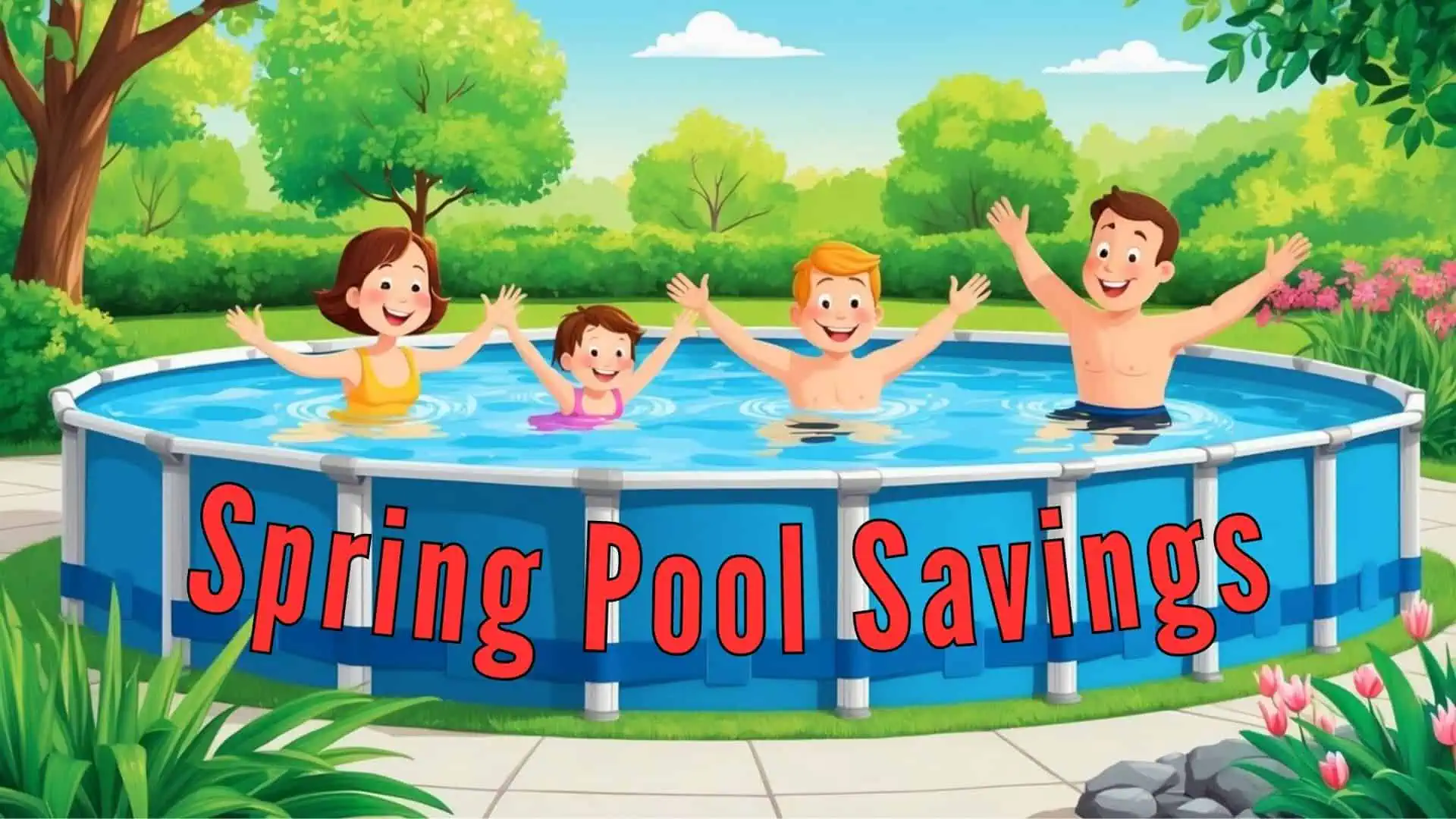
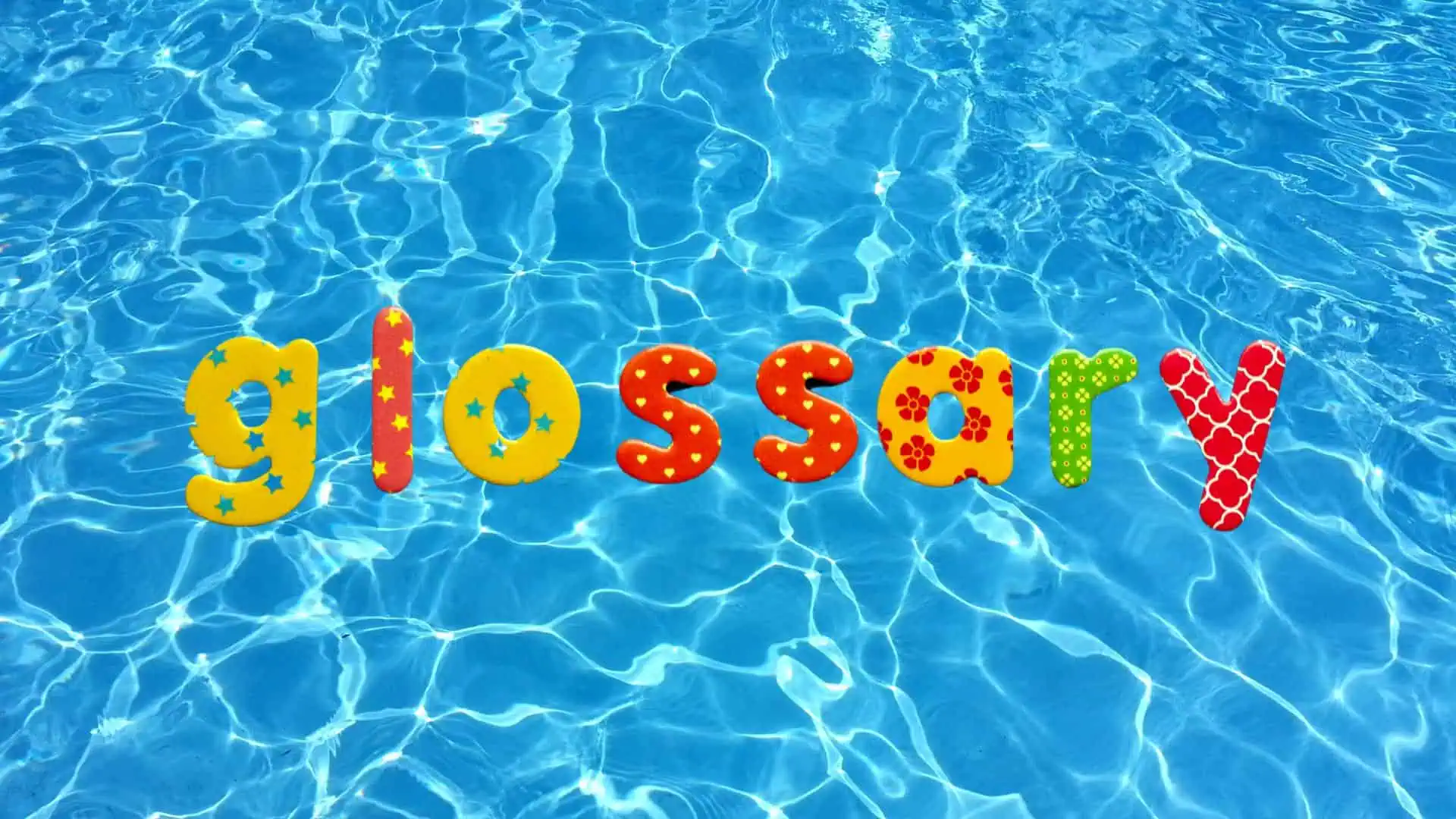
Leave a Reply